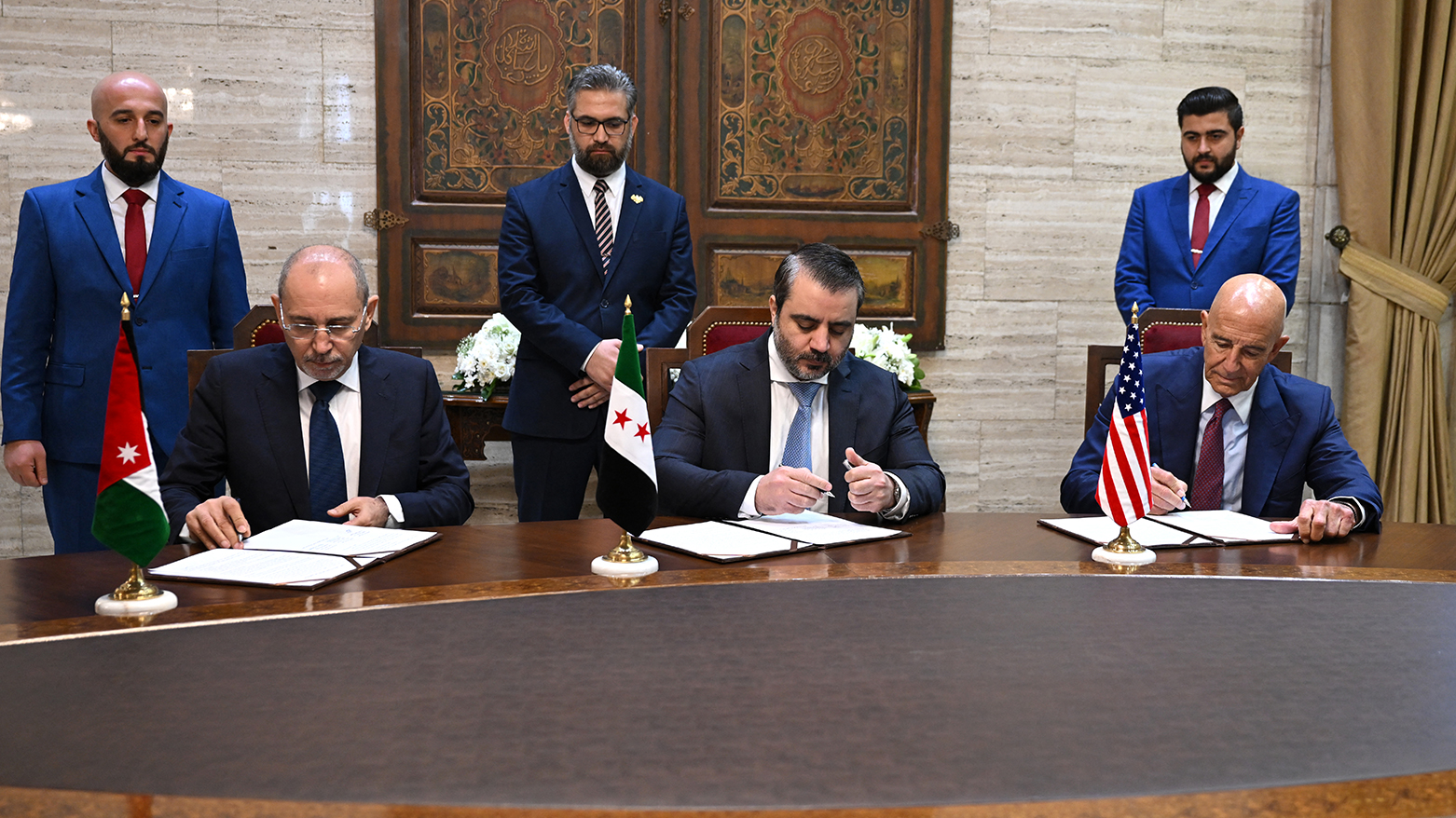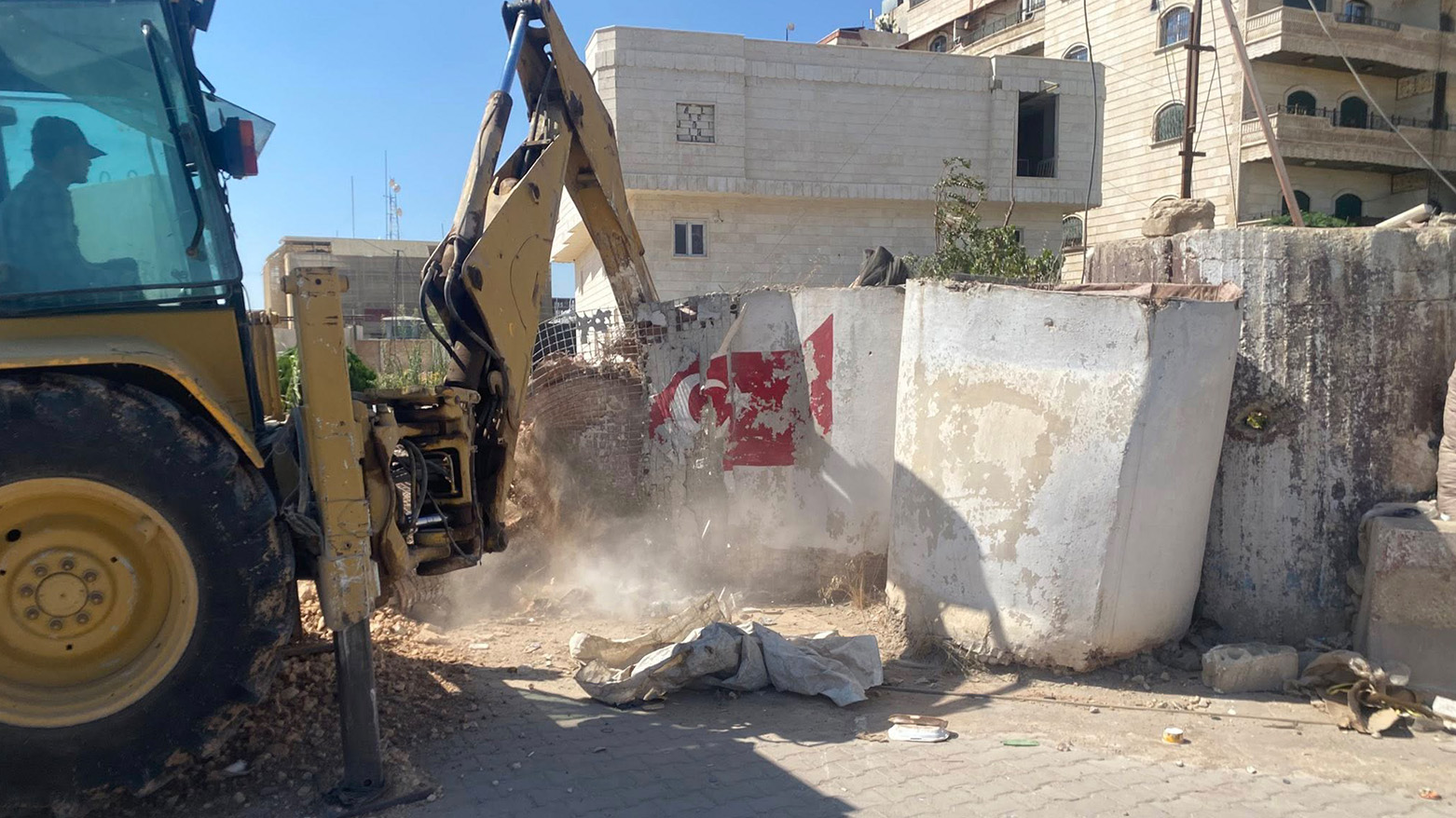Damascus Unveils U.S.-Backed Sweida Roadmap Amid Parallel Handover in Afrin
Syria, backed by the U.S. and Jordan, unveiled a Sweida reconciliation roadmap after July’s deadly violence. The plan includes UN probes, aid, security reforms, and reconstruction, while parallel shifts in Afrin mark Damascus’s bid to restore authority and unity.

Erbil (Kurdistan 24) – Syrian Foreign Minister Asaad Hassan al-Shaibani on Tuesday announced a comprehensive roadmap for reconciliation in Sweida province, developed with the backing of the United States and Jordan, following the bloody sectarian violence that engulfed the Druze-majority region in July and the security shifts in Afrin following Türkiye’s withdrawal from several military compounds..
The unrest in Sweida erupted on July 13 and lasted a full week, beginning as clashes between armed Druze groups and Bedouin fighters. The violence escalated dramatically after the intervention of Syrian government forces, who were later joined by tribal fighters siding with the Bedouins.
While Damascus claimed its forces acted to halt the fighting, witnesses, Druze factions, and the Syrian Observatory for Human Rights accused government troops of siding with the Bedouins and committing abuses against the Druze. According to the Observatory, more than 2,000 people were killed, including 789 Druze civilians who were allegedly executed on the spot by members of the Syrian Ministries of Defense and Interior.
The roadmap was unveiled during a joint press conference in Damascus attended by al-Shaibani, Jordanian Deputy Prime Minister and Foreign Minister Ayman Safadi, and U.S. Special Envoy for Syria Tom Barrack. The meeting followed earlier rounds of talks hosted in Amman on July 19 and August 12, which laid the groundwork for a ceasefire framework.
A statement issued by the Syrian Ministry of Foreign Affairs emphasized that the roadmap aims to resolve the crisis in Sweida while preserving the unity of Syrian territory and affirming that “all Syrians are equal citizens in rights and responsibilities.”
The joint document—titled Roadmap for Resolving the Crisis in Sweida and Stabilizing Southern Syria—outlined guiding principles for reconciliation. It underlined that Sweida is an integral part of Syria and that its residents are equal citizens with full rights and duties. It further stressed that restoring trust between the government and Sweida requires a gradual, step-by-step approach, beginning with confidence-building measures and transitional solutions leading to full reintegration into the Syrian state.
The three countries pledged to work together to support Syria’s security, unity, sovereignty, and reconstruction efforts while promoting an inclusive, Syrian-led political process.
The roadmap sets out thirteen measures to stabilize Sweida and foster reconciliation. First, Damascus will invite the UN Commission of Inquiry on Syria to conduct an independent investigation into recent events and commit to holding perpetrators accountable under Syrian law. The government also pledged to pursue judicial measures against those responsible for violations against civilians and their property.
Humanitarian aid will be ensured with U.S. and Jordanian backing, delivered in coordination with UN agencies. At the same time, Damascus will work to restore essential services in Sweida, with international donor support mobilized by Jordan and the United States. To secure mobility, Interior Ministry forces will be deployed along the Sweida–Damascus highway to guarantee safe transit for citizens and commerce.
The plan stipulates that civilian militias will withdraw from Sweida’s administrative borders and be replaced by trained police units, creating conditions for displaced villagers to return. In parallel, the International Committee of the Red Cross will be supported in finalizing the release and exchange of detainees and abductees.
Reconstruction efforts will also be launched, with Syria announcing plans to rebuild damaged villages and properties, backed by Jordanian and U.S. efforts to mobilize funding. To address deeper social divisions, Damascus pledged to promote a unifying national discourse that celebrates pluralism, equality, and rule of law while criminalizing hate speech that fuels sectarianism. Jordan and the United States promised legal support for this process if required.
Community dialogues will be convened under Jordan’s coordination, bringing together Druze, Christians, Sunnis, and Bedouin tribes to foster reconciliation. Meanwhile, transitional arrangements will establish interim security and administrative frameworks until Sweida’s full reintegration is achieved. These steps include forming a local police force under Interior Ministry oversight, reactivating civil institutions, creating a representative provincial council, finalizing prisoner releases, and ensuring sustained aid flows.
On regional security, the United States will lead discussions with Syria to seek arrangements with Israel that address both countries’ concerns while respecting Syrian sovereignty and territorial integrity, with Jordan providing support through joint meetings. Finally, the three parties agreed to establish a monitoring mechanism to oversee the full implementation of the roadmap while upholding Syrian sovereignty.
Comparisons with Afrin
The reconciliation push in Sweida has drawn comparisons with recent developments in Afrin, another flashpoint in Syria’s fragmented landscape. Following Türkiye’s decision to vacate several military compounds in Afrin in September 2025, Syrian Public Security Forces assumed control of the city, marking a significant shift from years of Turkish-backed rule.
On Sunday, Afrin City Council announced the reopening of several main roads that had been blocked. the council said that Crews utilized bulldozers to remove concrete barriers and earth mounds, successfully restoring traffic flow throughout the city. Activists from Afrin (who requested anonymity) told Kurdistan24 that the reopen followed the withdrawal of forces affiliated with the Turkish government from multiple compounds that had long been used as military bases and security outposts.

The local activists affirmed to Kurdistan 24 that Turkish forces handed over six compounds in central Afrin and the nearby Jindires district to Syria’s General Security Directorate.
According to the activists, the vacated sites, these facilities, originally government buildings, had been repurposed as military installations after the Turkish army and allied armed groups seized Afrin in 2018. Their handover to Syrian civil institutions marks a significant shift in the administration of the city.
Despite the changes, Turkish forces remain present in several other locations across Afrin. Local residents and activists told Kurdistan24 that “the army continues to occupy five villages—Basilê, Cilbirê, Dêwrîş, Çiya, and Şêxorz—preventing displaced families from returning.”
The change began after the Syrian Transitional President Ahmed al-Sharaa’s historic visit to Afrin in February underscored the political weight of the issue. Meeting Kurdish leaders and local activists, he was presented with grievances detailing widespread rights violations, land seizures, forced displacements, and arbitrary detentions under years of militia dominance. Kurdish representatives urged his government to assert full authority, dismantle armed factions, and guarantee justice, equality, and the return of displaced families.
Since then, Damascus has launched a recruitment drive in Afrin, drawing young Kurdish men and minority communities into the General Security forces. International observers see this move as both symbolic and strategic, projecting inclusivity while testing whether Damascus can regain trust in ethnically diverse regions once ravaged by displacement and demographic change.
Officials emphasized that the roadmap for Sweida represents a shared determination of Syria, Jordan, and the United States to resolve crises through constructive and practical approaches. For Damascus, both Sweida and Afrin now stand as litmus tests of its ability to implement inclusive governance, restore rights, and preserve national unity.
Al-Shaibani reaffirmed Damascus’s commitment to resolving the Sweida crisis “through a solution that guarantees Syria’s unity and secures all rights for the people of Sweida as equal citizens.” Safadi and Barrack welcomed Syria’s pledges and emphasized that stability in Sweida is central to broader regional security. Analysts note that similar commitments are now being closely watched in Afrin, where reconciliation, justice, and the protection of rights remain urgent demands.